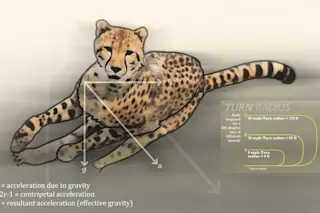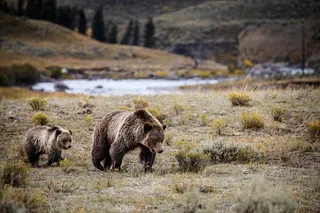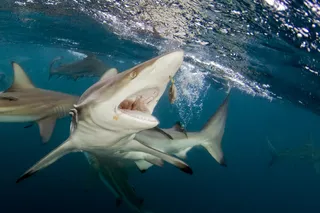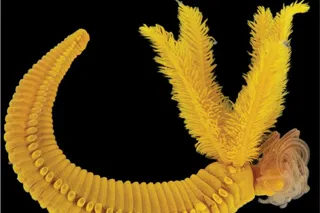Humans have kept cheetahs in captivity for 5,000 years and recorded the cats sprinting faster than 60 mph. Yet we’re only now grasping the true athleticism of the world’s fastest sprinter in its natural habitat, thanks to the work of a former competitive runner who wanted to understand “the enigma of the cheetah.”
Alan Wilson, a biomechanicist at London’s Royal Veterinary College, started out studying the locomotion of racehorses, greyhounds and jackrabbits at top speed. “We started running cheetahs in a zoo setting and didn’t really get them to go very fast,” he says. “Surely,” Wilson recalls thinking, “a wild cheetah goes even faster.”
So his team started developing equipment to measure how cheetahs move in their natural habitat. The work brought them to the dry grassland of Botswana’s Okavango Delta region, where researchers camped out in tents. Leopards, elephants and lions were frequent visitors.
Out on the delta, Wilson’s team produced the first close tracking of cheetahs hunting in the wild — and revelations that a remarkable ability to brake sharply and pivot may be as important for hunting success as the cat’s rocket-like acceleration. Here’s how the feline speedster catches its zigzagging prey.
1. Stalking
Data collected from five cheetahs over 17 months show a typical hunting run starting from relative stillness. The Botswana cats hunted at all hours, contrary to earlier studies suggesting cheetahs hunt mainly at dawn and dusk.
2. Burst of Acceleration
The cheetah fires its heavily muscled legs forward and back to accelerate by up to 6.7 mph in a single stride. Rigid paws and blunt claws act like cleats.
3. Top Speed
Lightning-quick muscle contractions make a galloping cheetah like an engine in low gear. Paws strike one at a time, and a flexible spine extends reach. But a wild cheetah needn’t go all-out for dinner. On average, the Botswana quintet topped out hunting runs at a moderate 33 mph and typically maintained top speed for only one to two seconds.
4. Crouch and Brake
Rapid slowdown enables quick, tight turns necessary to corner darting prey. A cheetah can decelerate by 8.95 mph in a single stride.
5. Weaving
A cheetah on the hunt may execute six or seven turns in a successful run spanning several hundred feet. The cat’s tail, up to 3 feet long, helps to initiate turns.
6. Prey Capture
Midgallop, a cheetah hooks one of its two sharp, retractable claws into the prey’s rump to yank the animal off balance. It suffocates the animal by biting the neck.
7. Feeding
Roughly one-quarter of 367 hunts recorded in Botswana ended in capture of prey — usually impala, although one male cheetah, named Qamar, frequently hunted warthog in thicker vegetation.
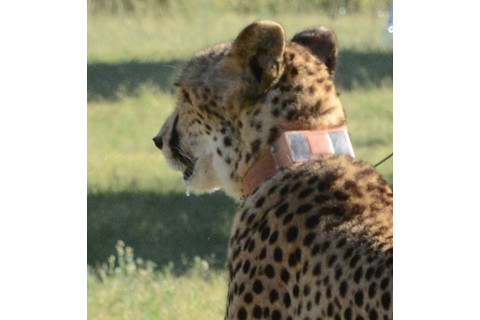
Alan Wilson/RVC
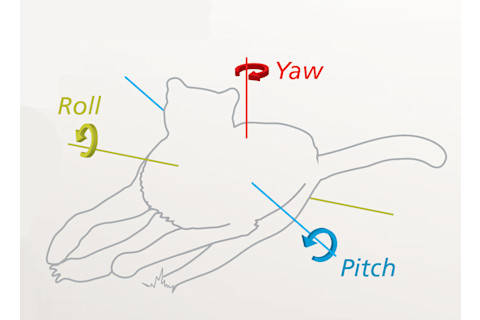
Jay Smith/Discover
Tech Tools
Alan Wilson’s Structure and Motion Laboratory developed a collar to track cheetahs’ hunting behavior and movement patterns in the wild at the level of individual footfalls. The team recruited Wilson’s dog — a greyhound-whippet-terrier cross — to test the gear on an English beach, cross-checking data reports against paw prints in the sand, before deploying collars in the field.
Gyroscopes, magnetometers, and accelerometers measure roll, pitch, and yaw, as well as posture, balance and acceleration.
GPS module delivers position and velocity data.
MicroSD flash memory card provides data storage.
Radio transmitter enables data downloading to ground vehicles or light aircraft.
Solar-powered rechargeable battery powers the device. A non-rechargeable battery provides backup.
Software monitors accelerometers, creates activity summaries and detects hunting events.


